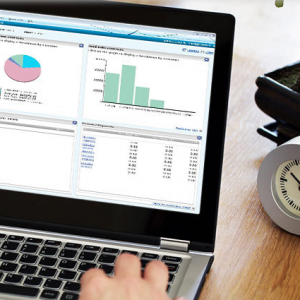Course Description
Every business needs competent, reliable staff to work in their accountancy and bookkeeping departments. If you’re looking for a new career and think a role in this always-in-demand sector could be for you, this flexible, practical online course from AAT is exactly what you’re looking for. Morrisons, ASDA, the Ministry of Justice and P&G are just some of the household names who use AAT-qualified
Is the Course for Me?
Committing to a career choice or career change is a big decision, so this great-value course is ideal if you have a good grasp of English and maths and want to explore the possibility of studying towards a bookkeeping or accounting role. The course is designed to instil the fundamental concepts of computerised accounting, giving you a good, solid grounding in the subject, including creating accounts, processing accounting information using Sage software, using batch control sheets and producing effective accounting spreadsheets. On completion you can choose to progress onto Level 2 confident in the knowledge that you’ve chosen the right path, with the option to progress to the advanced and professional qualifications, which in turn can lead to further career advancement and the potential to become an AAT full member (MAAT) or to study for chartered status. Skills in computerised accounting are sought after in all industries and can lead to roles such as clerical assistant, bookkeeper, accounts clerk, finance assistant or accounts administrator. Business owners will also find this course useful in efficiently keeping their own books.
How Do I Study?
All course content is designed for you to access at your own pace, across all devices, whenever and wherever suits you. This means that it’s ideal for career-changers who need to fit their learning around existing work and family commitments. Should you decide to progress with the AAT accounting programme of study, you should be able to achieve professional status within about 18 months to three years of embarking on the foundation level, then working through the advanced and professional qualifications.
KEY LEARNING POINTS
Master the basics of accounting by following the easy-to-access units of study.
- Feel confident that you’re using official learning material from Sage, the leading bookkeeping software provider in the UK.
- Become proficient in Sage 50 using the software included (time limited).
- Learn how to create accounts including adding new accounts to sales, purchase and nominal ledgers.
- Practise processing accounting information using the Sage software, including processing sales and purchase ledger information, entering initial capital, processing information involving transactions of different tax rates and in respect of cash and cheque payments and receipts.
- Come to understand how to use batch control sheets, including calculating and reconciling batch totals.
- Confidently produce reports including supplier activity, customer activity, supplier details, customer details and nominal ledger account reports, plus learn how to produce a trial balance.
- Become a proficient spreadsheet user, including entering, editing and organising data as well as using appropriate formulas and tools to summarise and display the data and to present the information effectively.
- Test your knowledge with a practise activity.
ADVANTAGES OF THIS COURSE
- Study wherever you like at a time that suits you.
- Course content is compatible with all devices.
- Tutor support is included for ease of learning.
- Technical support is available should you need it.
- Embarking on your accounting and finance studies with the firmly-established and industry-recognised AAT will give you the best possible start in your new career.
- Content includes valuable learning on SAGE, the UK’s most widely-used online accounting and payroll software.
- Study safe in the knowledge that 97% of full members would recommend the award-winning AAT.
- Self-paced study means you’re in total control of how quickly you progress.
- All course content is designed in collaboration with employers, drawing on the real-world skills they require from employees, giving the course a practical edge.
Get on the fast track to your new career in accountancy today by signing up to AAT – Introductory Award in Computerised Accounting (Level 1) today.






